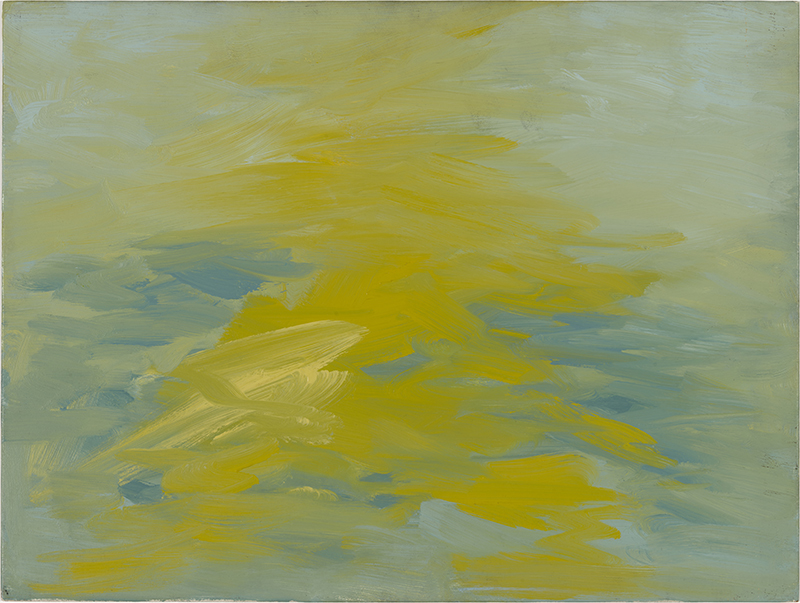Object of the Month: "Untitled," 1965–68, by Felrath Hines
By Bowdoin College Museum of Art
In 2022, the Bowdoin College Museum of Art proudly acquired Felrath Hines’s Untitled, 1965–68, the first work by the artist to enter the Museum’s collection. The work now hangs in Currents: Art Since 1875, providing beautiful insight into the exhibition’s interlaced themes of inspiration and the environment.
Hines was born in Indianapolis to parents who moved from the South during the Great Migration. Having worked early in his life as a waiter for a railroad company, he moved to Chicago to pursue his interest in the visual arts. He began his training as a painter at the School of the Art Institute of Chicago before relocating to New York City, where he continued his education at New York University and the Pratt Institute.
In 1963, he joined fifteen other artists to form Spiral, an eclectic group of Black artists led by Romare Bearden who were all engaged in the Civil Rights movement. The organization developed exhibitions, promoted each other’s work, and participated in Civil Rights demonstrations, including the 1963 March on Washington. In 1968, Hines’s work was included in a memorial exhibition at New York’s Museum of Modern Art to honor the recently assassinated Martin Luther King, Jr. During this period, however, he began increasingly to reject being grouped exclusively with other Black artists. In 1971, he declined an invitation from the Whitney Museum of American Art to participate in the groundbreaking exhibition, Contemporary Black Artists in America, citing a desire to be exhibited with artists of all backgrounds. In an interview later in his life, Felrath Hines observed: “I started painting to give myself a better life. I couldn’t find a handle with my name on it. I wanted something to do, something that was worthwhile and manageable. I do not want my work to be placed in a special category with a particular group. I should be able to show wherever I want to show and under the circumstances I prefer to show.”
Except for a brief period at the beginning of his artistic career, Hines pursued a lifelong interest in abstraction, commenting: “In my view an artist’s work is to rearrange everyday phenomena so as to enlarge our perception of who we are and what goes on about us.” Inspired especially by the work of the Dutch artist Piet Mondrian and the De Stijl group of abstract painters, he developed a practice characterized by strong design elements and geometry. Yet, though his paintings and prints were often centered on a bold, sharply delineated forms, he would at times also paint with gestural brushwork in a manner that recalled the Abstract Expressionists. This approach is evident in the untitled painting recently acquired for the BCMA’s collection. In this and other works from the 1960s, one can see Hines grappling with the legacy of the earlier Abstract Expressionists, as well as Impressionists such as Claude Monet.
Hines’s study of the nineteenth century French artist was bolstered in part by Hines’s work as a painting conservator. During this period he helped to conserve Monet’s Water Lilies at the Museum of Modern Art. Monet's influence is readily apparent in this oil on canvas. Although Hines had originally undertaken a study of conservation to support his own career as an artist, he became highly regarded in the field. Hines worked as a personal conservator to Georgia O’Keeffe and later at the Smithsonian Institution, where he would serve as Chief Conservator first at the National Portrait Gallery and later at the Hirshhorn Museum and Sculpture Garden. Following his retirement from the Smithsonian in 1984, Hines returned to the studio full time. We invite you to enjoy his creative legacy through the BCMA’s recently acquired painting.
Anne Collins Goodyear and Frank H. GoodyearCo-Directors, Bowdoin College Museum of Art